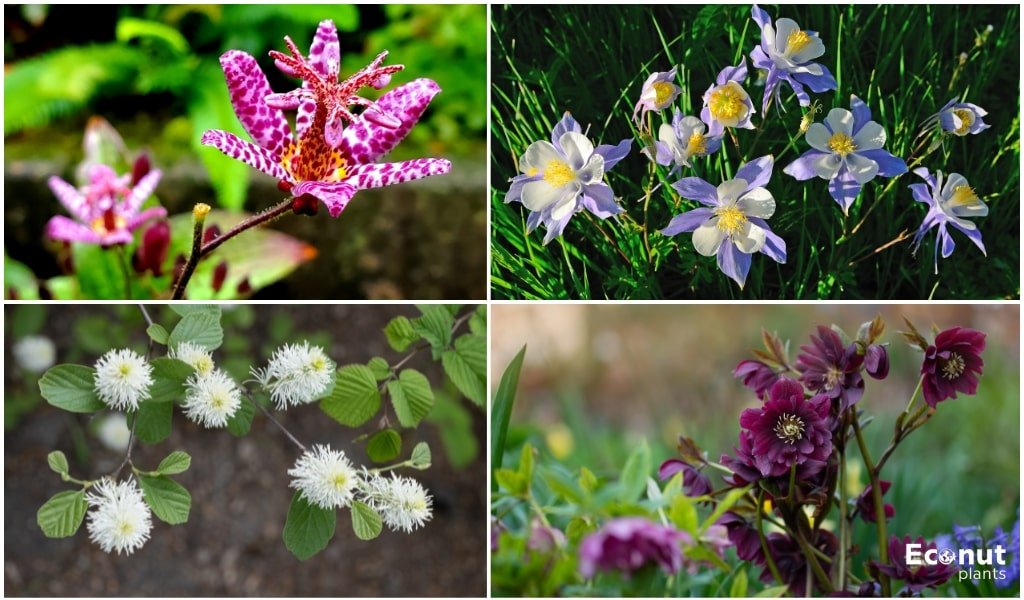Are you trying to find some perennials for your shade garden in Zone 5? Or maybe you have a garden section that gets very little sunlight, although you reside in a zone 5 climates?
This post delves deeper into our top picks for perennials that thrive in the shadows in Zone 5 gardening. These hardy plants can tolerate chilly weather and little shade.
1. Toad Lily
 Scientific Name: Tricyrtis spp.
Scientific Name: Tricyrtis spp.
Plant Type: Perennial
Plant Size: 2-3 ft. tall, 1-2 ft. wide
Sun Exposure: Full Sun to Partial Shade
Even though they might have striking similarities to some types of orchids, toad lilies are distinct plants. The Lily family includes them. The blossoms are spotted with purple and come in white or violet hues.
If you choose a location that is favourable for this plant, it should flourish. These unusual and lovely plants need some moisture in their soil, and they should be shielded from strong winds and direct sunlight. Although full shade is preferable, zone 5 toad lilies can thrive in partial shade as well.
2. Witch Alder
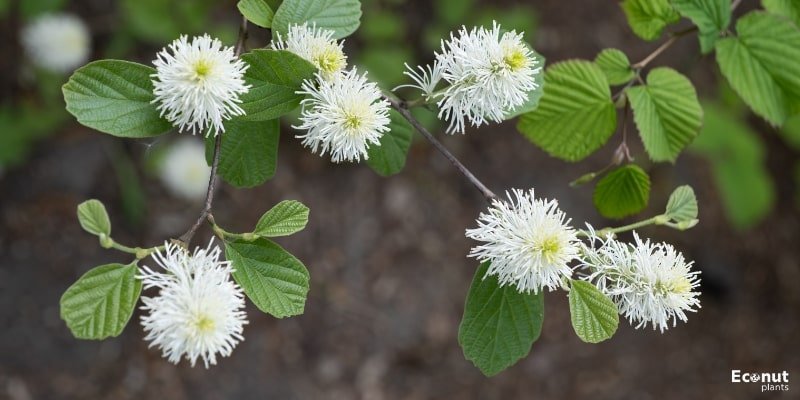 Scientific Name: Fothergilla spp.
Scientific Name: Fothergilla spp.
Plant Type: Perennial
Plant Size: 3-10 ft tall
Sun Exposure: Partial Shade to Full Shade
These pants don’t get very big or develop very quickly, yet they can have a tremendous impact. This low-growing shrub bears oval-shaped, green leaves that change into gorgeously warm autumn foliage, as well as fluffy white flowers. Witch alder comes in a few different forms, such as dwarf and big variants. This plant also existed in an extinct form.
The two most important soil conditions for which alder are adequate nutrition and excellent drainage. This plant performs well in the shade, but it does benefit from some sun for better blooming. Primarily through its roots, this plant can spread. This plant is adored by birds and butterflies.
3. Japanese Pachysandra
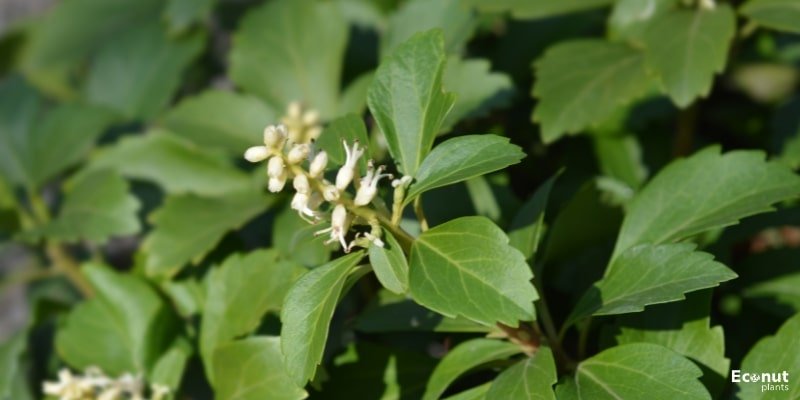 Scientific Name: Pachysandra terminalis
Scientific Name: Pachysandra terminalis
Plant Type: Perennial
Plant Size: 6 in tall
Sun Exposure: Partial Shade to Full Shade
Japanese pachysandra can be a fantastic option for you if you’re searching for a plant that you can put in and forget about. Because of its rhizomatous roots, it is a vigorous grower that can withstand a variety of circumstances. Its capacity to expand, nevertheless, may indicate that you need to pay attention to it to stop it from spreading too far.
The main application for Japanese Pachysandra is as a groundcover. It is prized for its tiny, white blossoms as well, though. This plant has dense, unusually shaped, dark green foliage. Little, ovoid leaves with a hint of serration are present.
4. Creeping Myrtle
 Scientific Name: Vinca minor
Scientific Name: Vinca minor
Plant Type: Perennial
Plant Size: 16 in
Sun Exposure: Partial Shade to Full Shade
This plant goes by several names, such as myrtle, dwarf periwinkle, and common periwinkle. Creeping myrtle is renowned for its ability to crawl along the ground, despite not being a climber. As a result, glossy, evergreen colonies of varying widths are created. You can notice tiny violet or white blossoms from early spring until midsummer.
This is a popular choice for a dense ground cover that acts as a leaf smotherer. Although creeping myrtle is not a problem in some regions of North America, it is regarded as an invasive species in others.
5. Bleeding Heart
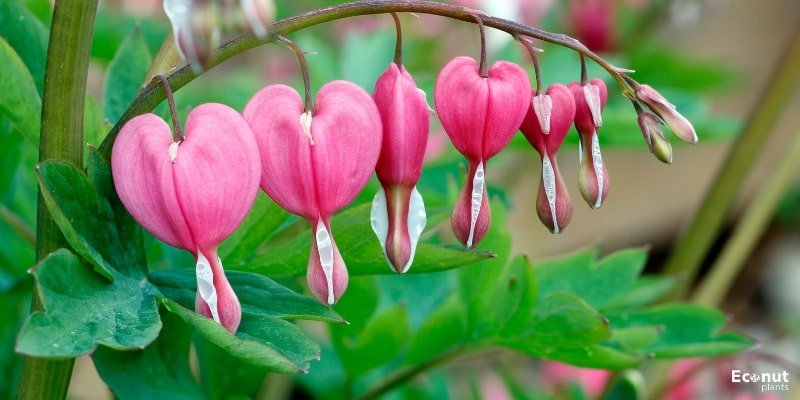 Scientific Name: Dicentra eximia
Scientific Name: Dicentra eximia
Plant Type: Perennial
Plant Size: 6 in- 3 ft tall
Sun Exposure: Partial Shade to Full Shade
It’s easy to see why this plant is called a bleeding heart just by looking at it. The blossoms have a heart-shaped form and release a single blood drop.
The Bleeding Hearts that are most often sold to backyard gardeners have a lot of closely related varieties. Usually, these relatives are wildflowers. The bleeding hearts are a great option if you’re searching for a timeless pop of colour.
The Bleeding Heart will wither away for the season if it is overheated. This plant is especially well-suited to colder zones, such as zone 5 because it dislikes heat. The soil should be well-drained but damp for these plants. If you want to have continuous greenery in the area where you plant them, you should be strategic because they bloom early before fading back.
6. Lungwort
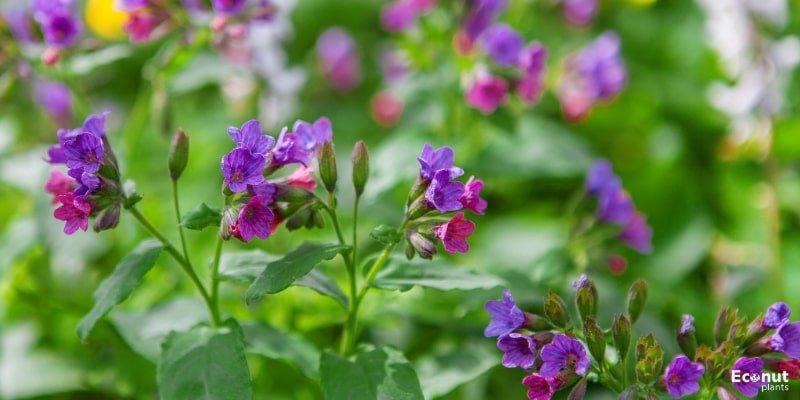 Scientific Name: Pulmonaria spp.
Scientific Name: Pulmonaria spp.
Plant Type: Perennial
Plant Size: 6–12 in tall
Sun Exposure: Partial Shade
This slow-growing plant is well-known for drawing pollinators. The perennial blooms of lungwort begin pink and eventually become blue. Depending on the exact variety you grow, you might see some colour variation.
Water is essential for lungwort growth. Because of this requirement, you might need to employ shade during the warmer months of the year to keep the solid moist. Humidity does not appeal to these plants.
7. Trillium
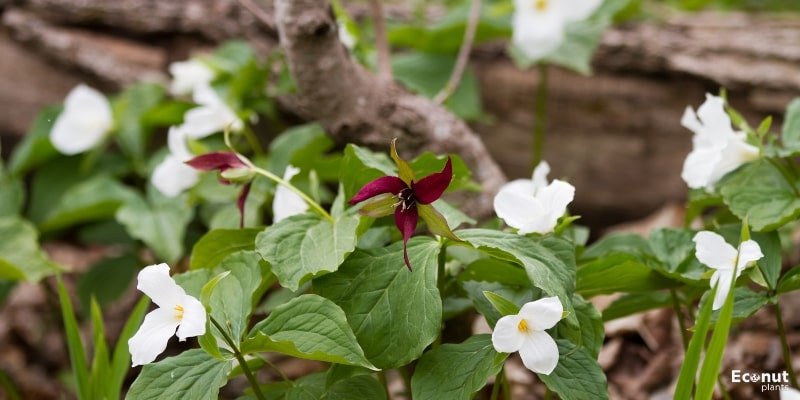 Scientific Name: Trillium spp.
Scientific Name: Trillium spp.
Plant Type: Perennial
Plant Size: 1–2 ft. tall and wide
Sun Exposure: Partial Shade to Full Shade
Trillium, so named because it tends to grow in triplicate, is a flower with three petals, three leaves, and three sepals. These plants can vary greatly in species if this pattern is broken. Some of them are coloured differently and grow in somewhat different places.
The leaves can have a variety of forms, ranging from slender and long to thick and round. The blooms might have different shapes and sizes, as well as a stem or not. A bloom may be white, pink, purple, yellow, green, or red.
These plants generally prefer conditions akin to those found in wooded areas. They require an abundance of moisture and nutrients in the soil. But the soil needs to drain properly as well.
8. Lily of the Valley
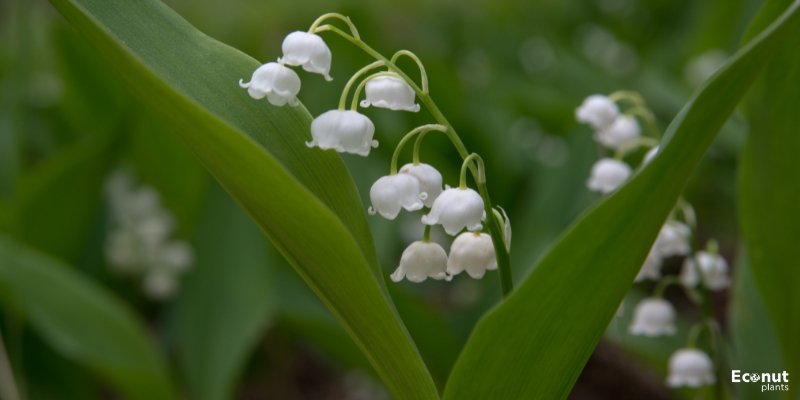 Scientific Name: Convallaria majalis
Scientific Name: Convallaria majalis
Plant Type: Perennial
Plant Size: 6-12 in tall, 9-12 in wide
Sun Exposure: Partial Shade to Full Shade
Even though the lily of the valley is closely related to asparagus, you don’t want to roast and consume this perennial plant with pink or white flowers very soon. Animals and people are known to be poisoned by it.
If you let it, this plant can spread fairly hardily to form a ground cover. Because of this, growing lily of the valley in containers is a popular choice. It is not frequently affected by illnesses or pests. Arriving in late spring, this low-growing plant spreads by way of its rhizomatous root. It thrives in soil that drains properly and beneath trees.
9. Dutchman’s breeches
 Scientific Name: Dicentra cucullaria
Scientific Name: Dicentra cucullaria
Plant Type: Perennial
Plant Size: 6–12 in. tall, 6–12 in. wide
Sun Exposure: Partial Shade to Full Shade
This plant has foliage and flowers just briefly in the early spring. The blooms of Dutchman’s breeches are named after an inverted pair of trousers.
The plant’s unusually shaped white blossoms and fern-like foliage are impressive to observe if you get the chance to view them. Should you appreciate a garden with seasonal flowers, go for the Dutchman’s breeches.
10. Hosta
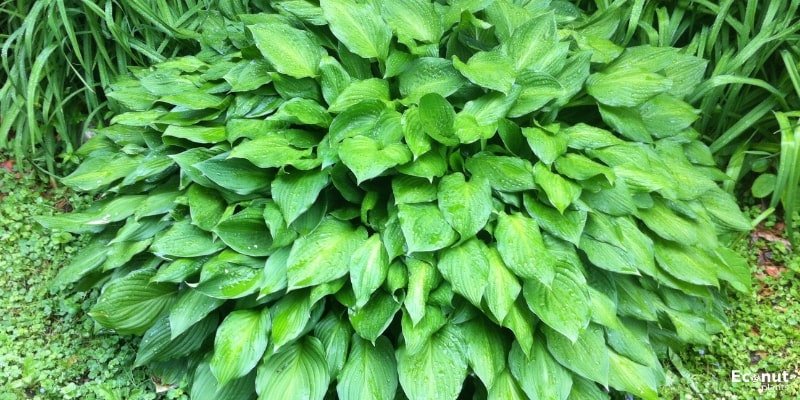 Scientific Name: Hosta spp.
Scientific Name: Hosta spp.
Plant Type: Perennial
Plant Size: 6-48 in. tall, 10 in.-6 ft. wide
Sun Exposure: Partial Shade to Full Shade
Hostas are widely used shade perennials that are available in a variety of hues and forms. The colour of the foliage can vary from light green to dark green.
It frequently has stripes in various tones of cream and green. The flowers may be lavender or white. Depending on how swiftly or slowly these plants grow, choose your varieties.
11. Rodgers Flower
 Scientific Name: Rodgersia
Scientific Name: Rodgersia
Plant Type: Perennial
Plant Size: 3-4 in tall
Sun Exposure: Partial Shade to Full Shade
Rodgers flowers are a genus that includes five species. This plant is recognized for its distinctive foliage in addition to its flower. Slightly pink blooms in the form of blades hover above the big, serrated foliage.
The growing season is a colourful adventure for the leaves. Before turning green in the summer, the leaves are a shade of bronze in the spring. The green leaves turn scarlet in late autumn before going off.
Because shaded areas provide moist soil, these plants thrive in them. If you give it lots of water, it can flourish in full light. But often, planting plants in the shade is just easier.
12. Barrenwort
 Scientific Name: Epimedium
Scientific Name: Epimedium
Plant Type: Perennial
Plant Size: 6 in – 3 ft tall
Sun Exposure: Full Sun to Partial Shade
If you believe that plants under shadow cannot have vibrant colours, you should reconsider. This multicoloured perennial with exquisite flowers can withstand shade. Choose from purple or greenish-blue leaves with red, orange, yellow, pink, or white blossoms.
If you want visual interest throughout the year, barrenwort is a great option. Many species can withstand Zone 5’s frigid temperatures. The rhizomatous roots of barleywort can tolerate a wide range of soil types, including damp and dry soil.
If you want lots of blossoms, this plant does best in partial shade. Barrenwort will not suffer from complete shadow, but it might not produce as many blooms as it would if you gave it some sun. The leaves of this barrenwort plant might burn in a harsh sun since it is susceptible to excessive light.
13. Climbing Hydrangea
 Scientific Name: Hydrangea anomala ssp. petiolar
Scientific Name: Hydrangea anomala ssp. petiolar
Plant Type: Perennial
Plant Size: 30-50 ft
Sun Exposure: Full Sun to Full Shade
You’ll be happy to hear that there is a climbing hydrangea if you adore hydrangea but wish it had some climbing vine characteristics. This solution performs admirably on trellises, walls, and fences. Remember that it can take several years for Hydrangea anomala to establish itself sufficiently to produce flowers.
Though it thrives in partial sunlight, this vine is said to tolerate more shadow than other related species. If you live in a warm climate, you will appreciate the shade. Rich, well-drained soil is ideal for them.
The climbing hydrangea is available in multiple kinds, each with a few subtle variations. White flowers are found in the Petiolaris subspecies, while leaves show variegation in Miranda.
14. Boston ivy
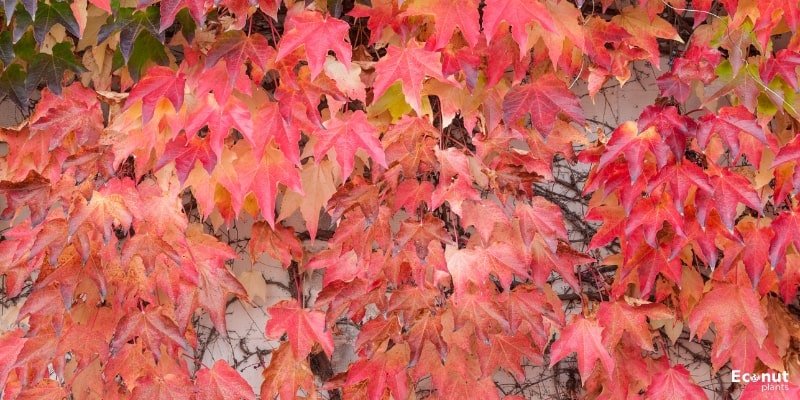 Scientific Name: Parthenocissus tricuspidata
Scientific Name: Parthenocissus tricuspidata
Plant Type: Perennial
Plant Size: 30-50 ft spread
Sun Exposure: Full Sun to Partial Shade
If you’re looking for a vine that thrives in shade, pick this one. Boston ivy can grow as a rich groundcover or as a resilient climber on buildings. Though less harmful than its cousin, English ivy, it can also harm some siding and gutters.
Being a very vigorous grower, this ivy type will probably require pruning from time to time. This plant can reach a height of three to ten feet annually.
This plant’s leaves change colour throughout the year, going from red to green and back again. Eventually, Boston ivy produces dark berries in addition to tiny, greenish blossoms.
15. Coral Bells
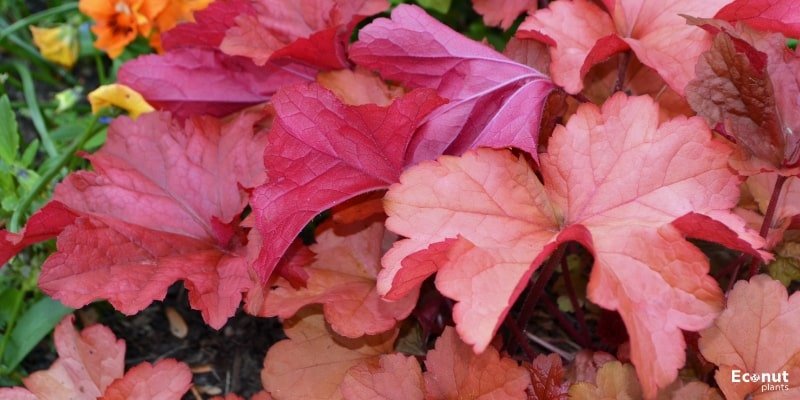 Scientific Name: Heuchera spp.
Scientific Name: Heuchera spp.
Plant Type: Perennial
Plant Size: 8–18 in. tall, 12–24 in. wide
Sun Exposure: Partial Shade to Full Shade
This well-liked perennial is available in several eye-catching variations. Choose from flowers and leaves in the colours red, orange, coral, pink, and white. People appreciate this plant for its gorgeous, vibrant foliage in addition to its noteworthy scattering of tiny flowers.
Even though these plants like dampness and shade, it’s crucial to make sure that there is adequate drainage to avoid root rot. Make sure the watering schedule for your plants is balanced properly if they will be exposed to sunlight.
16. Foxglove
 Scientific Name: Digitalis purpurea
Scientific Name: Digitalis purpurea
Plant Type: Perennial, Biennial
Plant Size: 2-5 feet tall
Sun Exposure: Partial Shade to Full Shade
Among the various varieties of foxglove is the common foxglove. The plant, which is both perennial and biennial, only produces a tiny clump of foliage in its first year and a stalk of blossoms in its second. The plant reseeds itself after its blooming season.
Blooms typically feature colourful speckles and might be pink, purple, or white. Compared to other plants, this perennial doesn’t spread out too quickly and can grow to be fairly tall.
17. Monkshood
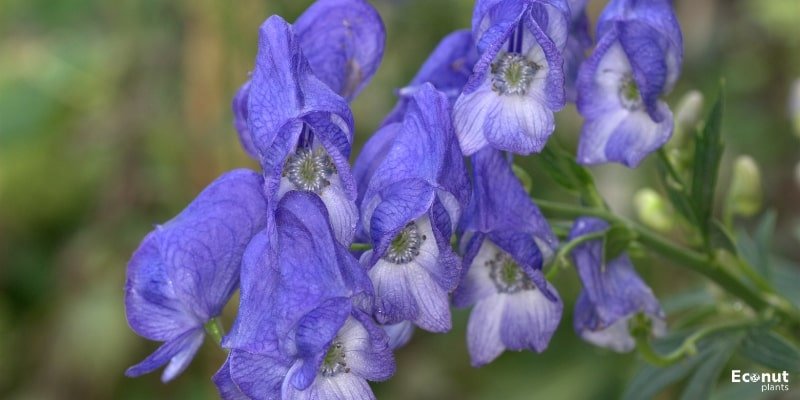 Scientific Name: Aconitum napellus
Scientific Name: Aconitum napellus
Plant Type: Perennial
Plant Size: 2–4 ft tall
Sun Exposure: Full Sun to Partial Shade
There are numerous sizes and shapes for aconitum. Aconitum napellus is the most widely grown variety; it features blue-white flowers that resemble a monk’s cowl.
The plants thrive in a variety of soil types and prefer some light shade. If you live somewhere warm, plant the blooms somewhere dark because they can burn from too much sun.
18. Lenten Rose
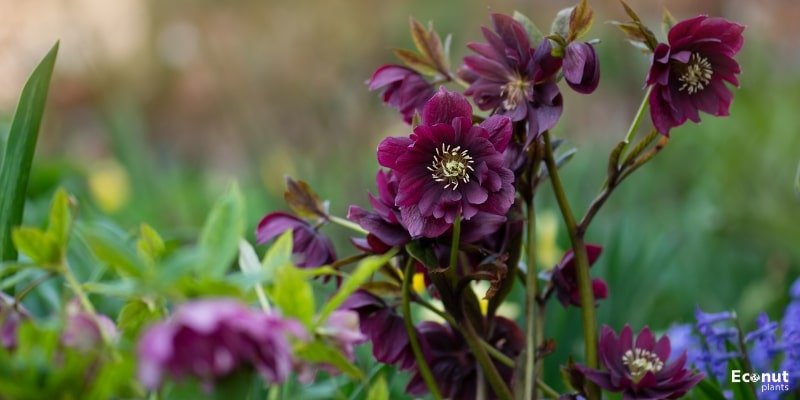 Scientific Name: Helleborus orientalis
Scientific Name: Helleborus orientalis
Plant Type: Perennial
Plant Size: 12-18 in tall and wide
Sun Exposure: Partial Shade to Full Shade
The Lenten rose is more closely connected to a buttercup than it is to the rose family. Choose this alternative, also called the hellebore, if you need an early bloomer that loves shade to add some colour to your garden in the early spring. There are crimson, yellow, purple, and white blooms.
19. Columbine
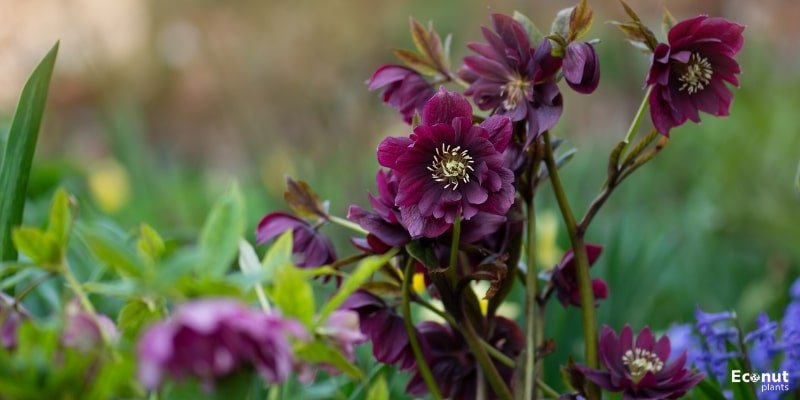 Scientific Name: Aquilegia
Scientific Name: Aquilegia
Plant Type: Perennial
Plant Size: 1-3 ft tall
Sun Exposure: Full Sun to Partial Shade
This plant is prized for having both beautiful flowers and leaves. The foliage resembles a somewhat serrated clover, and the blossoms have a distinctive, ethereal shape. Plants with red, orange, yellow, blue, purple, pink, or white flowers are your options. These colours are also combined in many flowers.
Refrain from deadheading the blooms to promote the growth of other Columbine plants. These plants do require some moisture in the early stages of their lives, but they can withstand some drought after they establish themselves.
No matter how old the plant is, drainage is essential. Although they can withstand full sun, these blooms may thrive in “nearly” complete shade as well.
20. Astilbe
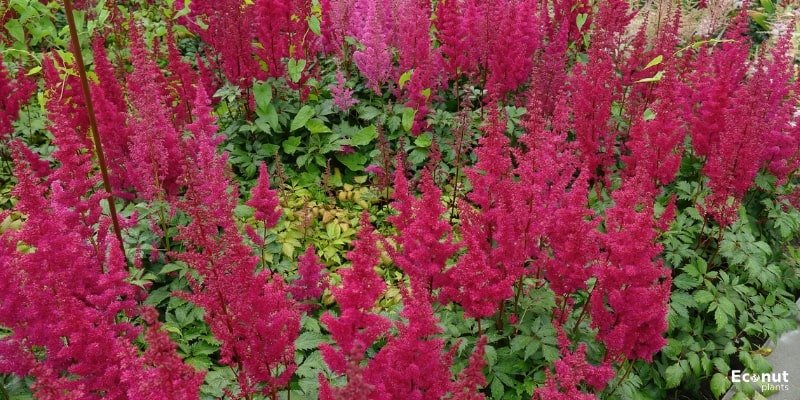 Scientific Name: Astilbe spp.
Scientific Name: Astilbe spp.
Plant Type: Perennial
Plant Size: 6-24 in tall
Sun Exposure: Partial Shade to Full Sun
Astilbe comes in a wide variety of species; however, they all generally share the same requirements. They thrive on loamy soil and have rhizomatous roots. Planting them in the cooler months of the year is preferable to the hot ones.
The blooms’ delicate, fluffy spears might be crimson, pink, or white. You should plant these in an area with lots of shade if you live anywhere that gets hot. These plants are hardy perennials down to zone three and can thrive in milder regions.
21. Bush Honeysuckle
 Scientific Name: Diervilla lonicera
Scientific Name: Diervilla lonicera
Plant Type: Perennial
Plant Size: 4 ft
Sun Exposure: Partial Shade
Bush honeysuckle is a fantastic choice for a shade-loving shrub that may be grown in zone 5. This shrub can also be used to create a hedge. This shrub’s dense leaves and tiny yellow flowers make for an eye-catching sight in any shady garden. Autumn foliage changes from green to yellow and orange.
This plant can tolerate a variety of light intensities. For strong foliage and successful blooming, some sun is required. Once established, this plant can withstand extremely dry soil, unlike many other species on this list. The optimum places in Zone 5 for bush honeysuckle growth are those with low humidity levels.
22. Golden Star
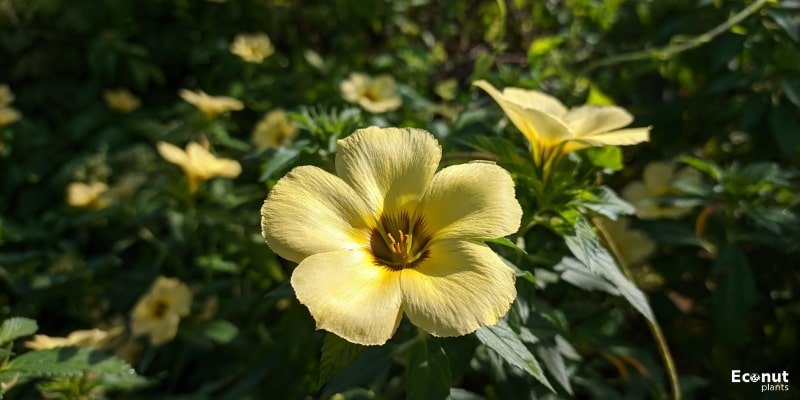 Scientific Name: Bloomeria
Scientific Name: Bloomeria
Plant Type: Perennial herb
Plant Size: Up to 12 inches tall
Sun Exposure: Full Sun to Partial Shade
The low-maintenance native plant known as golden star, or Chrysogonum virginianum, grows into a spreading groundcover with starry yellow flowers throughout the spring and summer.
Except for its coldest regions, this plant keeps the majority of its leaves throughout the winter. Golden stars proliferate quickly but can be easily contained if they take up too much room.
23. Cinnamon Fern
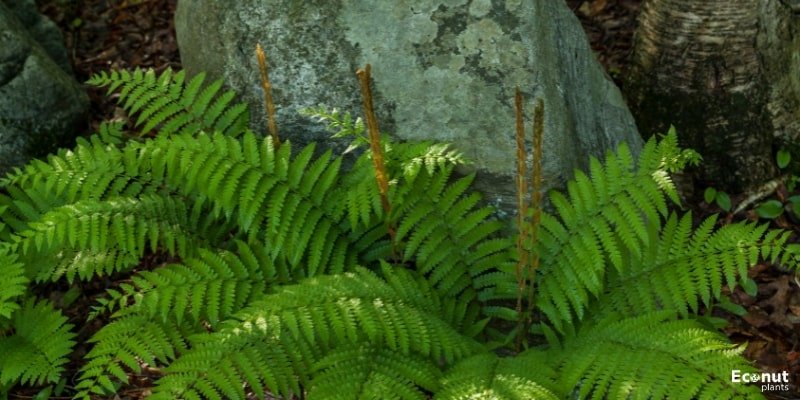 Scientific Name: Osmundastrum Cinnamomum
Scientific Name: Osmundastrum Cinnamomum
Plant Type: Perennial
Plant Size: Up to 3 feet tall
Sun Exposure: Full Sun to Partial Shade
The graceful, tall cinnamon fern creates a vase-shaped cluster that is perfect for underplanting low-growing shade plants.
The fuzzy fiddleheads sprout from the base of the plant in the spring and unfold into big, brilliant green fronds that sparkle through the summer, then turn yellow and die back for the winter.
24. Japanese Forestgrass
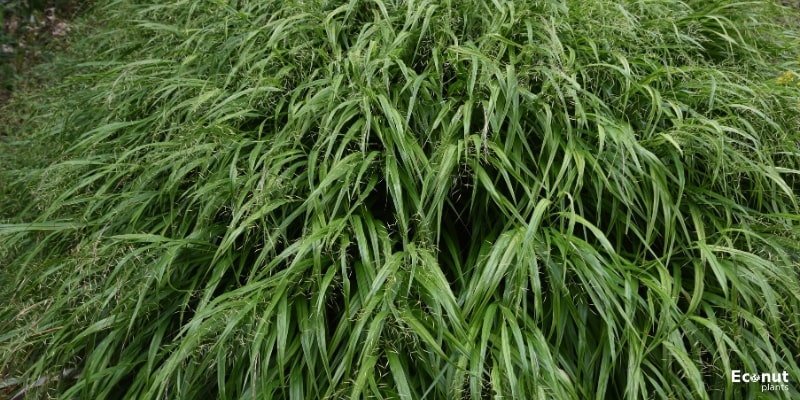 Scientific Name: Hakonechloa macra
Scientific Name: Hakonechloa macra
Plant Type: Perennial
Plant Size: Up to 3 feet tall
Sun Exposure: Full Sun to Partial Shade
Japanese forest grass has elegant foliage that resembles waterfalls. It is available in dazzling gold, yellow, or white variegation.
These vibrant shade plants often have gorgeous reddish-brown foliage in the autumn. ‘All Gold’ has even more dazzling golden leaves than ‘Aureola,’ which has bright yellow leaves with dark green borders.
25. Wild Ginger
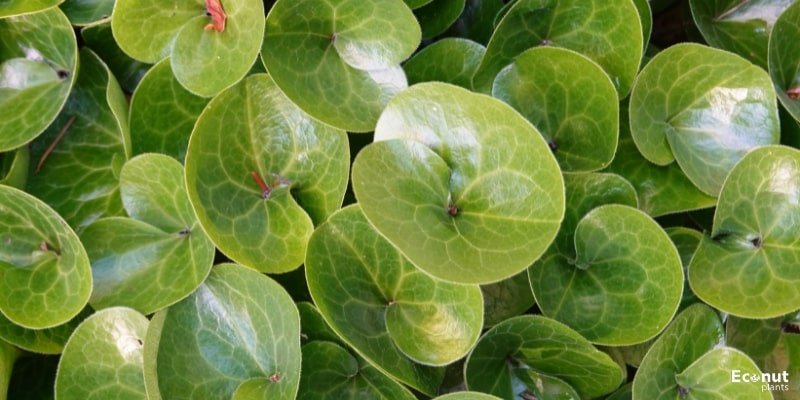 Scientific Name: Asarum
Scientific Name: Asarum
Plant Type: Perennial
Plant Size: Up to 6 inches tall
Sun Exposure: Full Sun to Partial Shade
One of the hardiest shadow plants is wild ginger, which is native to North American woodlands. It looks fantastic from spring through autumn with its fluffy, heart-shaped leaves, and it is rarely troubled by rabbits and deer. With time, this slow-growing plant creates stunning ground cover.
Conclusion
You can make use of the shade in your garden, whether it comes from nearby structures, trees, or fences. In Zone 5, many of the exquisite foliage and unusual flowers can thrive in the shade.
The absence of light will be especially beneficial to zone 5 champion plants, as it can preserve their soil moisture. Any of the shade perennials we’ve discussed for zone 5 gardening should offer some colour and a wonderful variety of plants that will attract and benefit local pollinators!

